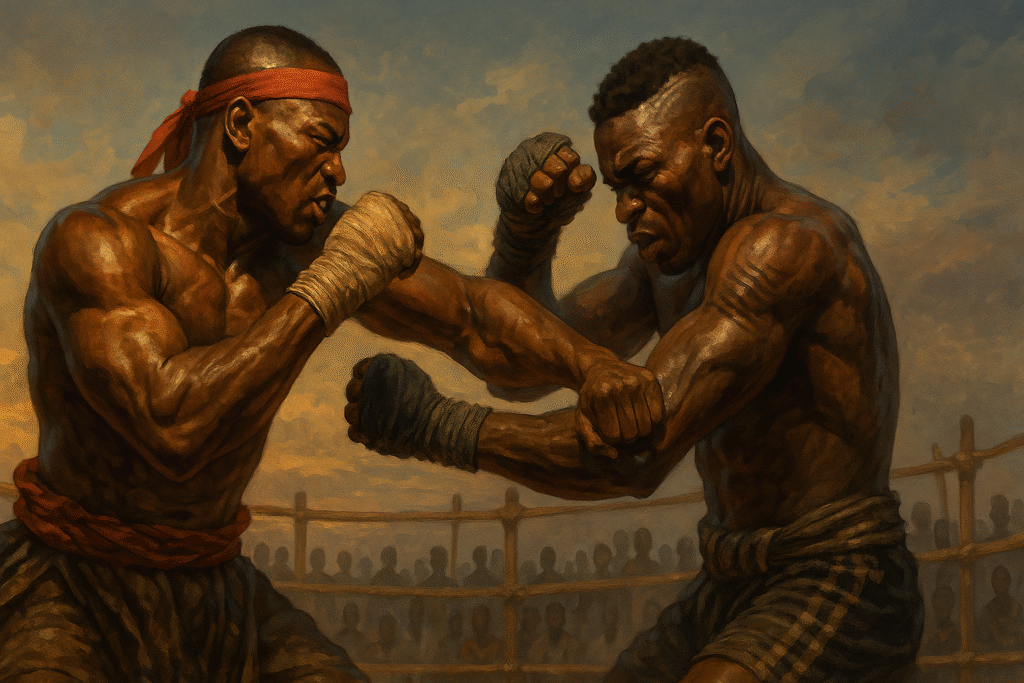Hausa Traditional Dambe

Hausa Traditional Dambe is a raw, intense combat art born from the warrior traditions of the Hausa people in West Africa. Rooted in ritual and community, it blends bare-knuckle boxing with cultural performance, music, and spiritual symbolism. Fighters wrap their lead hand in cloth, turning it into a hardened “spear hand” to strike with precision and power. Today, Dambe has evolved into a fast-growing spectator sport, maintaining its cultural authenticity while gaining global recognition through viral fights and modern competitions.
Hausa Traditional Dambe
About Hausa Traditional Dambe
Discover the essence of Hausa Traditional Dambe, a fierce and culturally rooted martial art originating from West Africa. Learn how its combat rituals, spiritual ties, and warrior ethos shape a unique system of bare-knuckle boxing.
Hausa Traditional Dambe History
Explore the historical roots of Dambe among Hausa butchers’ guilds, its rise in pre-colonial warrior culture, and its evolution from tribal tradition to urban street arenas.
Philosophy & Approach
Dambe emphasizes courage, ritualistic discipline, and personal transformation through combat. It balances brutal physicality with deep cultural symbolism tied to honor and initiation rites.
Techniques & Style
Master the signature one-handed striking style with a wrapped “spear hand,” supported by strategic footwork and powerful clinch tactics. Dambe’s movements are explosive, unorthodox, and devastating at close range.
Traditions & Etiquette
Learn the ceremonial customs before and after a Dambe match, including praise singing, drumming, and invocations of ancestral spirits. Respect, bravery, and communal pride govern the unwritten rules of combat.
Uniform & Symbols
Explore the iconic Dambe attire: minimal clothing, tightly wrapped striking hand, and protective charms known as “juju.” Each element holds symbolic power tied to warrior identity and ritual protection.
Weapons
While Dambe is primarily a hand-to-hand martial art, its symbolic “weapons” lie in the wrapped fist, hardened through tradition and spiritual belief. Discover the cultural context of this unique form of armed unarmed combat.
Ranking System
There is no formal belt system in Dambe. Instead, fighters earn recognition through victories, reputation, and tribal acknowledgment as they rise from novice “da’gaza” to feared “champion butchers.”
Hausa Traditional Dambe Glossary
Navigate key terms like “Kokawa,” “da’gaza,” “juju,” and “spear hand” in this glossary designed to clarify the language, techniques, and ritual practices within Dambe tradition.
Notable Figures
Meet legendary Dambe champions such as Ali Kanwuri and Baban Dogo, whose prowess and charisma elevated the art’s profile across Nigeria and West Africa. Their stories embody the spirit of modern Dambe.
Branches & Organizations
Explore how contemporary Dambe federations, local fight clubs, and social media collectives are preserving and globalizing this ancient martial tradition across Africa and beyond.
Competitive Format
Understand Dambe’s unique tournament structure, from three-round knockouts to open-air street bouts. Learn how fighters engage in psychological warfare, public challenges, and raw displays of dominance.

